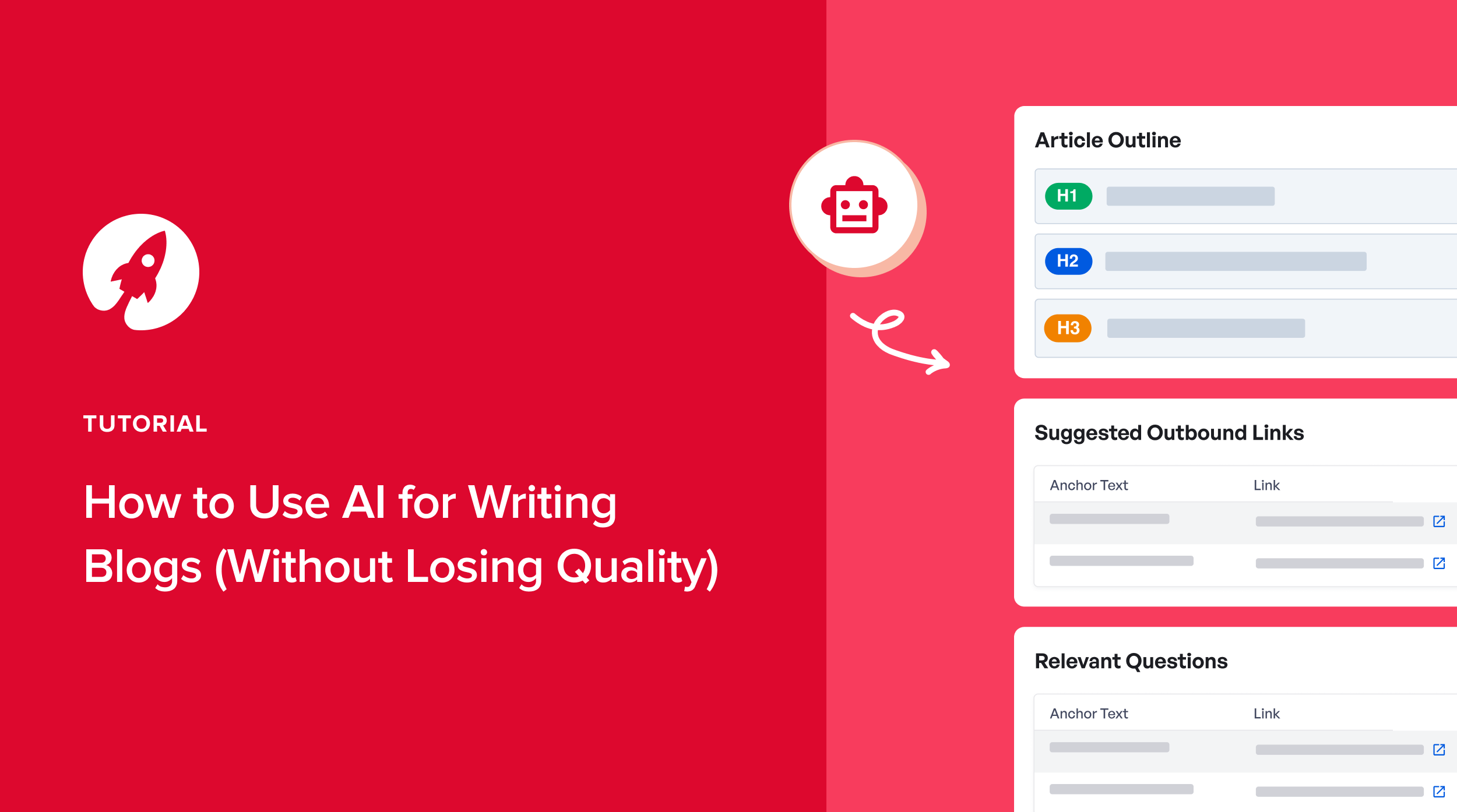AI for writing blogs has quickly become the biggest content trend of the year and a reality of modern content creation.
From generating outlines to optimizing SEO and even helping with rewrites, AI tools have become an essential part of every writer’s workflow.
But here’s the catch: relying too heavily on AI can make your content sound flat or misaligned with your brand voice.
So, how do you strike the perfect balance?
In this guide, I’ll walk you through how to use AI for writing blogs without losing quality.
You’ll learn how to combine human creativity with AI efficiency to speed up your workflow, improve search rankings, and still sound like you.
Let’s start with a definition.
What Are AI Writing Tools?
AI writing tools are software platforms that use artificial intelligence, typically machine learning and natural language processing, to help create written content.
These tools can generate entire blog posts, suggest headlines, optimize content for SEO, and even adjust tone of voice to structure the content based on your input.
They’re trained on vast datasets to mimic human-like writing, allowing you to produce content faster without starting from a blank page.
Some of the most popular AI writing tools, like SEOBoost, go a step further by incorporating keyword insights, competitive analysis, and SEO best practices right into the writing process.
Ultimately, using AI for writing blogs is a collaborative process. It doesn’t replace your creativity; it supports it.
Why You Should Use AI for Blog Writing
As a writer, I’ve learned that the key to scaling high-quality content isn’t just writing faster; it’s writing smarter.
That’s where AI comes in.
While some fear AI tools dilute originality, I’ve found that when used thoughtfully, they actually elevate it.
Here’s how:
Time Efficiency
Writing blog posts, especially those optimized for SEO, can often take hours. Between topic ideation, keyword research, outlining, and actual writing, the process is labor-intensive. AI speeds this up.
As someone who’s written 200+ SEO articles, I use AI to help manage my workflow, so I can focus on maintaining editorial integrity, providing expert-backed content, and personalizing each post.
And the one AI SEO tool I can always rely on for doing this is SEOBoost.
With SEOBoost, I can generate optimized outlines and optimize content within minutes. That cuts my content production time in half, allowing me to focus more on storytelling.
This efficiency has enabled me to consistently deliver high-value content without experiencing burnout.
Content Ideas and Research
We all hit creative blocks.
There are days when even deciding what to write feels like climbing Everest. That’s when AI research features shine.
I love using SEOBoost’s Topic Reports feature for this purpose. It analyzes competitor content and Google SERPs, helping to identify content gaps for any keyword.
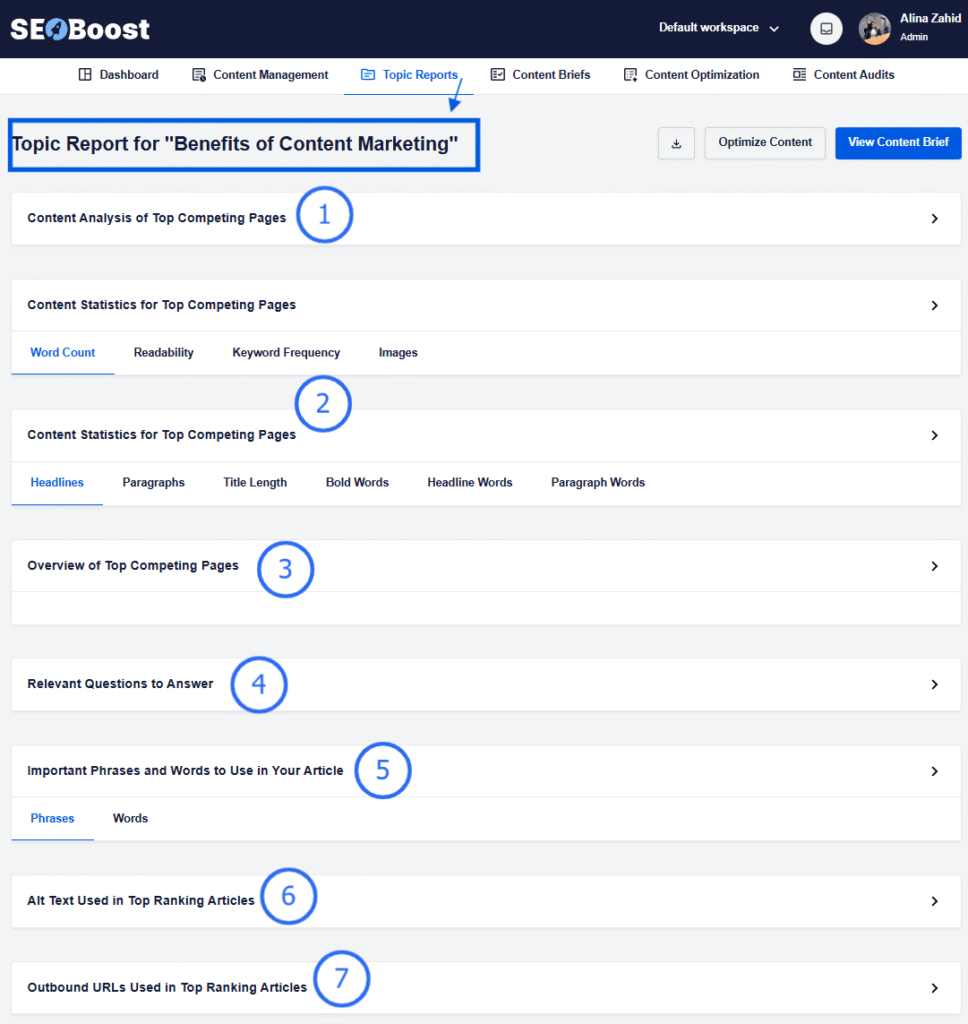
Using this data, I can generate content ideas that might have been missed in manual research. It also highlights relevant questions people ask, which are super relevant for winning a place in featured snippets on Google.
For me, all of this means less time staring at a blank page and more time building high-quality content.
SEO Benefits
Writing a great blog isn’t enough; it also needs to rank.
SEOBoost’s Content Optimization feature, in particular, has transformed the way I optimize content. As I write, it tells me if I’m underusing keywords, missing structure elements, or if an important on-page SEO element is missing.
You can also use other content tools like Jasper AI and SurferSEO, which offer similar real-time optimization.
But, for me, what sets SEOBoost apart is how seamlessly it aligns with search intent, readability, and on-page SEO all in one interface.
Consistency
Whether you’re managing a content calendar or writing on behalf of clients, maintaining a consistent tone, structure, and quality can be tough.
Using AI tools consistently ensures that every piece I produce aligns with brand voice, SEO goals, and audience needs. It eliminates discrepancies in quality and formatting, which is particularly helpful when collaborating with freelancers or publishing at scale.
How to Use AI for Writing Blogs
Now, that you understand how using AI for writing blogs can refine your content strategy, let’s get to the important part: how you use it.
1. Start With a Clear Outline and Brief
One of the biggest mistakes I made early on with AI tools was assuming they could “just write” a great blog.
But here’s the truth: AI is only as good as the instructions you give it. Without a well-structured brief or outline, the output often ends up generic or misaligned with your goals.
As a writer who creates content across industries and formats, I’ve found that a clear content structure is everything. It guides the AI, keeps the piece focused, and saves you from hours of cleanup later.
Starting with a solid outline and a brief ensures the following at the very beginning:
- The content flows logically.
- Each section addresses a distinct search query or intent.
- You hit your keyword and topical coverage targets.
- The tone stays consistent from start to finish.
So, to create a strong outline now, I use SEOBoost’s Content Briefs feature.
It ties in with the topic report for the focus keyword and helps add data, questions, and headings directly from there.
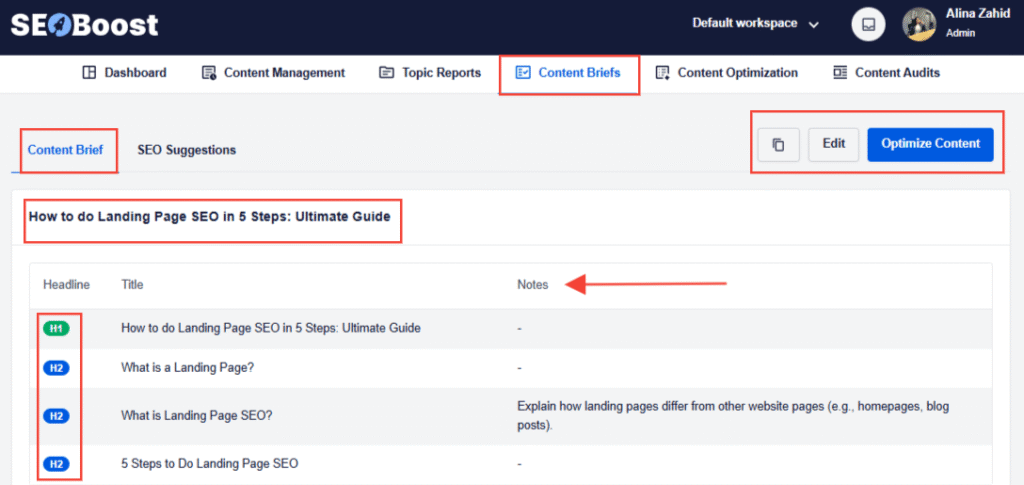
You can also add notes to help your team or other writers understand the creative direction clearly.
These AI briefs also highlight key SEO suggestions, including word count ranges based on SERP data, keyword density, and questions to consider.
Using these insights, you can give yourself a head start on content creation.
As someone who’s built SEO strategies from scratch, I know that structure reflects expertise. Readers (and search engines) love well-organized content, and giving AI a detailed brief helps you deliver that every time.
2. Do a Quality Check of AI-Generated Content
While AI tools are incredibly helpful for drafting content quickly, the output still needs a human’s touch to make it trustworthy, engaging, and unique.
As a professional writer myself, I treat the AI content like a rough draft. My role is to polish it into something that’s not only SEO-optimized, but also credible, human, and aligned with the brand’s voice.
To do that, I always add my personal experience to the topic I write about. This could be sharing my own processes, observations, or including data points and learnings from using different tools.
Doing this helps me create E-E-A-T compliant SEO content.
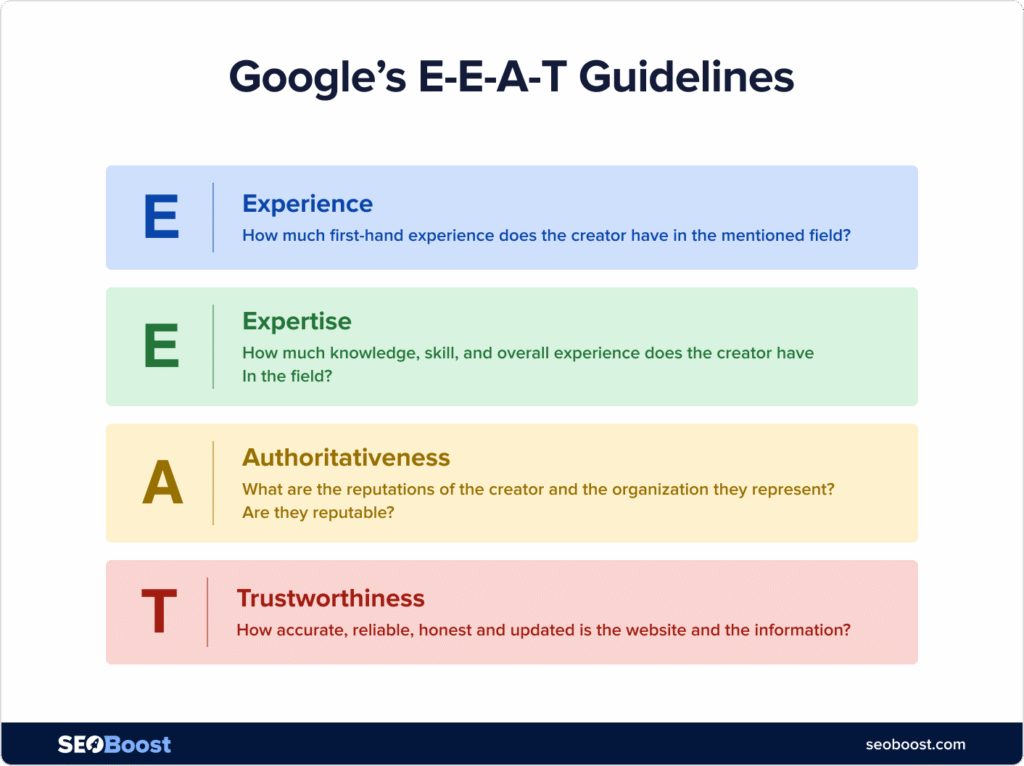
Once I’ve made edits to the content, I run it through SEOBoost’s Content Optimization feature. This gives real-time suggestions on keyword use, subheadings, and structure. It’s like having a checklist to ensure nothing’s missed, without killing creativity.
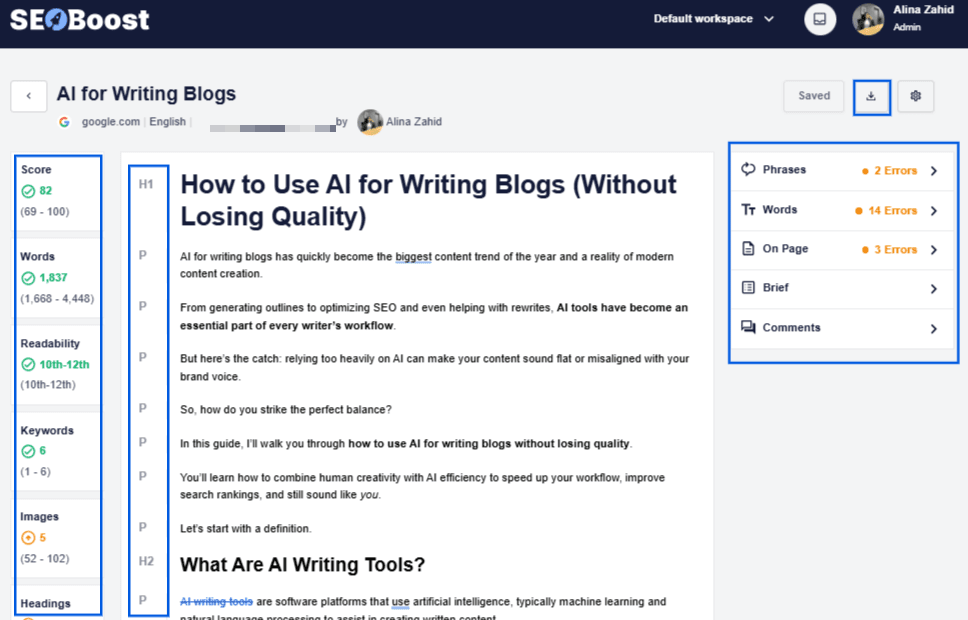
I also use Grammarly to catch minor grammatical issues and Hemingway Editor to simplify dense paragraphs. It ensures that even technical blogs stay clear and digestible.
Another thing you should always do as a writer is fact-check everything.
AI models aren’t always up to date. That’s why you should double-check the stats, tools, and case studies mentioned, especially for SEO topics, where algorithm updates and tool features evolve rapidly.
Remember, creating a balance between AI and human creativity is what ensures your content’s success.
3. Keep SEO in Mind With AI Writing
Even the most insightful blog post won’t drive traffic if it’s not optimized for search engines. That’s why integrating an SEO strategy into your AI writing workflow is crucial.
The good news? Most AI SEO optimization tools now offer built-in SEO functionality, helping you align content with keyword intent, keyword strategy, and on-page best practices, right from the draft stage.
As someone who writes SEO content daily, I can confidently say this: AI isn’t just a time-saver; it’s an SEO multiplier, if you use it right.
Here are a few instances where you can use AI tools to keep SEO front and center while writing:
- Use AI-powered tools like LowFruits and SEOBoost to assist you with keyword research.
- Optimize your content structure and depth using AI tools that analyze the top-performing SERP results.
- Use a tool like SEOBoost that provides a real-time on-page SEO score for your content.
By weaving these tools into your writing workflow, you’ll find that you’re able to produce higher-quality content in less time.
4. Use AI for Content Repurposing and Updating
If you’ve been creating content for a while, your blog already holds a goldmine of ideas. Some of these may be outdated, underperforming, or buried beneath newer posts.
This is where AI for writing blogs becomes a game-changer.
Instead of starting from scratch every time, you can repurpose and refresh content using AI tools to save time and boost rankings.
This strategy improves your efficiency while demonstrating experience and expertise, two key components of Google’s E-E-A-T framework.
To repurpose content, first identify the content that is in decay.
Content decay is the gradual decline in a webpage’s search rankings, traffic, and engagement over time, often caused by outdated information, fresher competitor content, or shifts in search intent.
Tools like SEOBoost’s Content Audit feature analyze your existing content and generate a color-coded report to show where your content stands.

This can help you prioritize updates and spot repurposing opportunities.
You can also look into data from Google Analytics to see if you have a traffic drop, and then plug that content URL in SEOBoost to see what exact updates to make.
I also recommend using AI to repurpose content for new formats or channels. For instance, you can convert a blog into a LinkedIn post or Twitter thread.
Updating and repurposing content keeps your site relevant while amplifying your previous work. It’s faster than writing from scratch and adds freshness signals that search engines love.
5. Proofreading and Editing With AI
I’ve learned that publishing without proper editing can undermine even the strongest ideas.
Grammar slips, awkward phrasing, or unclear structure can undermine your message and negatively impact your rankings.
That’s why I rely on the AI-powered content optimization editor in SEOBoost to polish my work before it goes live. It highlights important readability metrics that help refine the content outcome.
The one I like the most is the readability range it provides for each piece of content based on the top-performing pages. This ensures that the content I create is being optimized for the right audience type.
It’s also important to note that editing isn’t just about technical correctness. To build trust with both users and search engines, your content needs to be clear and engaging.
To do that, I’d suggest using proofreading or editing tools to catch typos, passive voice, and a lack of transitions while also offering tone suggestions.
Remember, clean, well-edited content builds trust and signals professionalism. Using AI to support editing, not replace it, has helped me consistently publish content that’s credible, readable, and search-friendly.
Final Word
Using AI for writing blogs doesn’t mean compromising on quality. When paired with the right tools, like SEOBoost, it becomes a way to enhance your process, not replace your creativity.
As a writer myself, I’ve found that the real power of AI lies in how well you can guide it.
With the right outline, SEO strategy, and a commitment to quality control, AI can turn hours of research and formatting into an easier workflow, without losing the human touch that builds trust and authority.
FAQs
Yes, you can use AI tools like ChatGPT, Chatty, and Copy.ai to generate blog content, optimize it for SEO, and streamline the writing process.
There are several AI writing tools that you can use based on your requirements. Some of the commonly used options include Writesonic, ChatGPT, and Gemini.
Yes, you can use AI for writing blogs and creating SEO-optimized content, but human editing is essential. You should always refine the AI output to align with your brand’s voice, accuracy standards, and reader intent.


